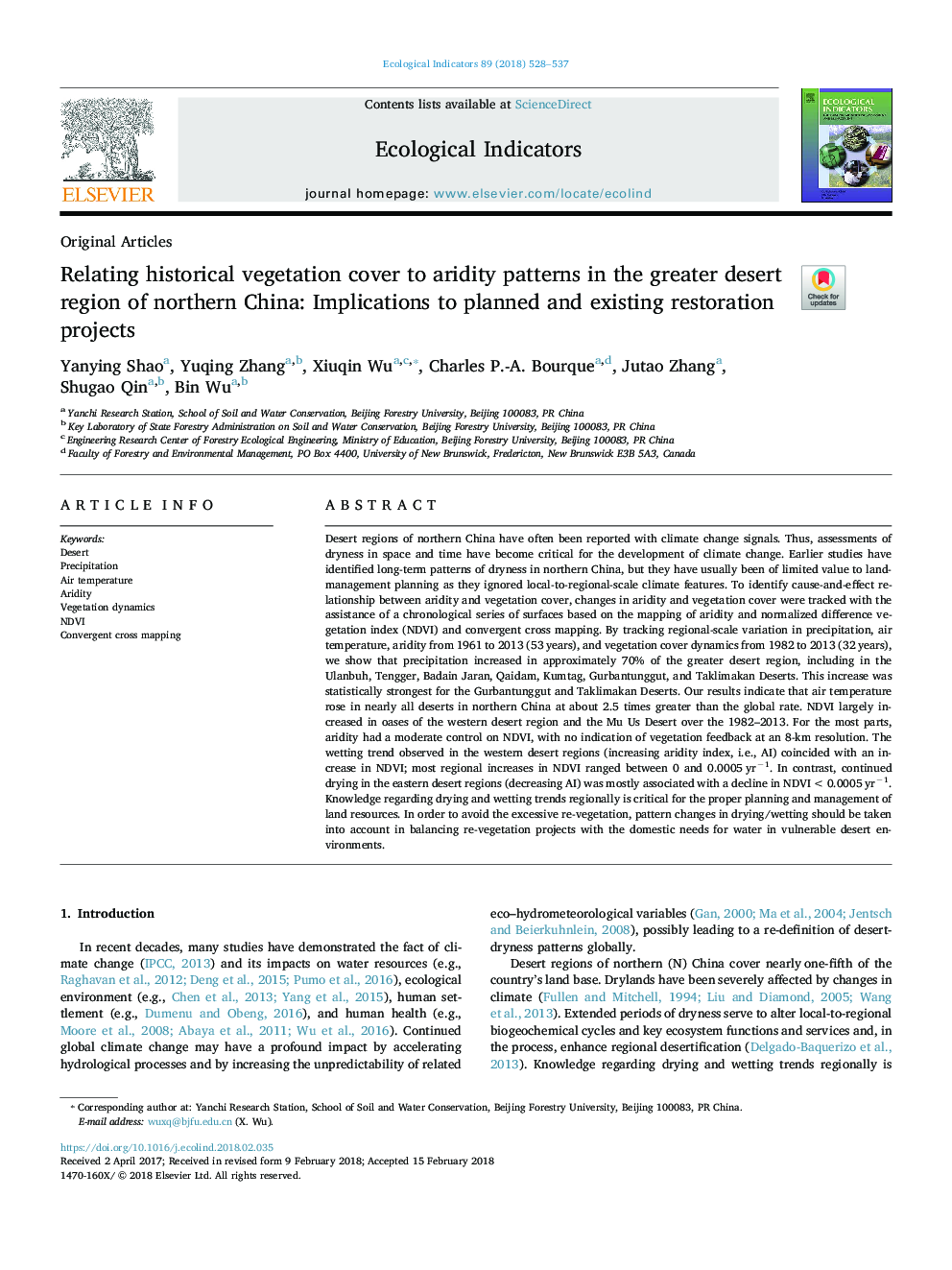| Article ID | Journal | Published Year | Pages | File Type |
|---|---|---|---|---|
| 8845500 | Ecological Indicators | 2018 | 10 Pages |
Abstract
Desert regions of northern China have often been reported with climate change signals. Thus, assessments of dryness in space and time have become critical for the development of climate change. Earlier studies have identified long-term patterns of dryness in northern China, but they have usually been of limited value to land-management planning as they ignored local-to-regional-scale climate features. To identify cause-and-effect relationship between aridity and vegetation cover, changes in aridity and vegetation cover were tracked with the assistance of a chronological series of surfaces based on the mapping of aridity and normalized difference vegetation index (NDVI) and convergent cross mapping. By tracking regional-scale variation in precipitation, air temperature, aridity from 1961 to 2013 (53â¯years), and vegetation cover dynamics from 1982 to 2013 (32â¯years), we show that precipitation increased in approximately 70% of the greater desert region, including in the Ulanbuh, Tengger, Badain Jaran, Qaidam, Kumtag, Gurbantunggut, and Taklimakan Deserts. This increase was statistically strongest for the Gurbantunggut and Taklimakan Deserts. Our results indicate that air temperature rose in nearly all deserts in northern China at about 2.5 times greater than the global rate. NDVI largely increased in oases of the western desert region and the Mu Us Desert over the 1982-2013. For the most parts, aridity had a moderate control on NDVI, with no indication of vegetation feedback at an 8-km resolution. The wetting trend observed in the western desert regions (increasing aridity index, i.e., AI) coincided with an increase in NDVI; most regional increases in NDVI ranged between 0 and 0.0005â¯yrâ1. In contrast, continued drying in the eastern desert regions (decreasing AI) was mostly associated with a decline in NDVI <0.0005â¯yrâ1. Knowledge regarding drying and wetting trends regionally is critical for the proper planning and management of land resources. In order to avoid the excessive re-vegetation, pattern changes in drying/wetting should be taken into account in balancing re-vegetation projects with the domestic needs for water in vulnerable desert environments.
Related Topics
Life Sciences
Agricultural and Biological Sciences
Ecology, Evolution, Behavior and Systematics
Authors
Yanying Shao, Yuqing Zhang, Xiuqin Wu, Charles P.-A. Bourque, Jutao Zhang, Shugao Qin, Bin Wu,
